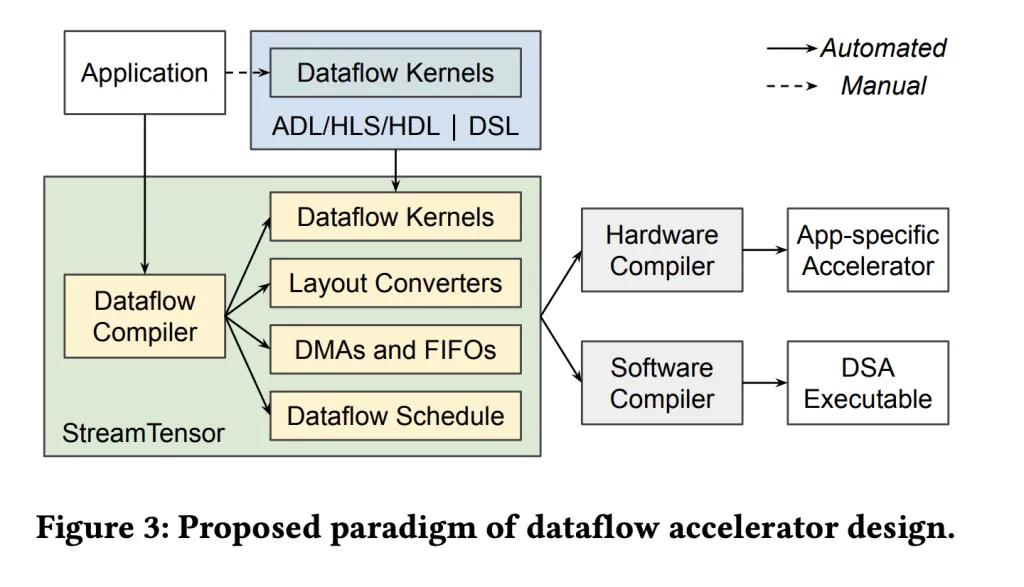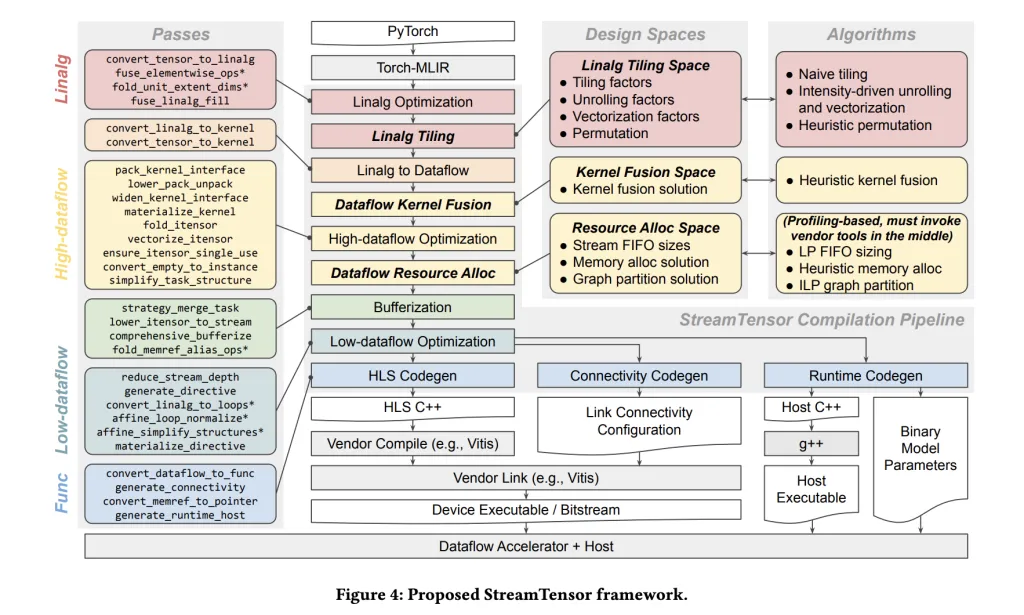Why deal with LLM inference as batched kernels to DRAM when a dataflow compiler can pipe tiles via on-chip FIFOs and stream converters?StreamTensor is a compiler that lowers PyTorch LLM graphs (GPT-2, Llama, Qwen, Gemma) into stream-scheduled dataflow accelerators on AMD’s Alveo U55C FPGA. The system introduces an iterative tensor (“itensor”) sort to encode tile/order of streams, enabling provably appropriate inter-kernel streaming and automatic insertion/sizing of DMA engines, FIFOs, and structure converters. On LLM decoding workloads, the analysis crew experiences as much as 0.64× decrease latency vs. GPUs and as much as 1.99× larger vitality effectivity.

What StreamTensor does?
StreamTensor compiles PyTorch graphs right into a stream-oriented dataflow design in order that intermediate tiles are largely avoids off-chip DRAM round-trips through on-chip streaming and fusion; DMAs are inserted solely when required; they’re forwarded via on-chip FIFOs to downstream kernels. The compiler’s central abstraction—iterative tensors (itensors)—data iteration order, tiling, and structure, which makes inter-kernel stream compatibility specific and drives converter era solely the place wanted. The framework additionally searches hierarchically over tiling, fusion, and useful resource allocation, and makes use of a linear program to dimension FIFOs to keep away from stalls or impasse whereas minimizing on-chip reminiscence.


What’s really new?
- Hierarchical DSE. The compiler explores three design areas—(i) tiling/unroll/vectorization/permutation on the Linalg degree, (ii) fusion below reminiscence/useful resource constraints, and (iii) useful resource allocation/stream widths—optimizing for sustained throughput below bandwidth limits.
- Finish-to-end PyTorch → gadget circulate. Fashions enter through Torch-MLIR, are reworked to MLIR Linalg, after which right into a dataflow IR whose nodes turn into {hardware} kernels with specific streams and host/runtime glue—no guide RTL meeting.
- iterative tensor (itensor) typing system. A primary-class tensor sort expresses iteration order, tiling, and affine maps. This makes stream order specific, permits protected kernel fusion, and lets the compiler synthesize minimal buffer/format converters when producers/shoppers disagree.
- Formal FIFO sizing. Inter-kernel buffering is solved with a linear-programming formulation to keep away from stalls/deadlocks whereas minimizing on-chip reminiscence utilization (BRAM/URAM).
Outcomes
Latency: as much as 0.76× vs prior FPGA LLM accelerators and 0.64× vs a GPU baseline on GPT-2; Power effectivity: as much as 1.99× vs A100 on rising LLMs (model-dependent). Platform context: Alveo U55C (HBM2 16 GB, 460 GB/s, PCIe Gen3×16 or twin Gen4×8, 2×QSFP28).


The helpful contribution here’s a PyTorch→Torch-MLIR→dataflow compiler that emits stream-scheduled kernels and a number/runtime for AMD’s Alveo U55C; the iterative tensor sort plus linear-programming-based FIFO sizing allows protected inter-kernel streaming somewhat than DRAM round-trips. On reported LLM decoding benchmarks throughout GPT-2, Llama, Qwen, and Gemma, the analysis crew present geometric-mean latency as little as 0.64× vs. a GPU baseline and vitality effectivity as much as 1.99×, with scope restricted to decoding workloads. The {hardware} context is evident: Alveo U55C offers 16 GB HBM2 at 460 GB/s with twin QSFP28 and PCIe Gen3×16 or twin Gen4×8, which aligns with the streaming dataflow design.
Try the Paper. Be at liberty to take a look at our GitHub Web page for Tutorials, Codes and Notebooks. Additionally, be happy to comply with us on Twitter and don’t neglect to hitch our 100k+ ML SubReddit and Subscribe to our E-newsletter.

Michal Sutter is an information science skilled with a Grasp of Science in Information Science from the College of Padova. With a strong basis in statistical evaluation, machine studying, and knowledge engineering, Michal excels at reworking complicated datasets into actionable insights.
Elevate your perspective with NextTech Information, the place innovation meets perception.
Uncover the most recent breakthroughs, get unique updates, and join with a worldwide community of future-focused thinkers.
Unlock tomorrow’s developments at present: learn extra, subscribe to our publication, and turn into a part of the NextTech group at NextTech-news.com

